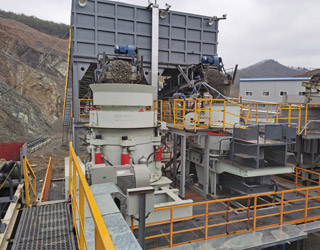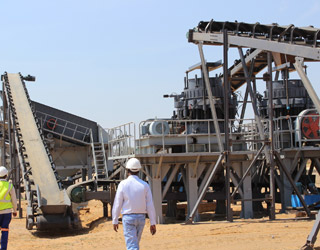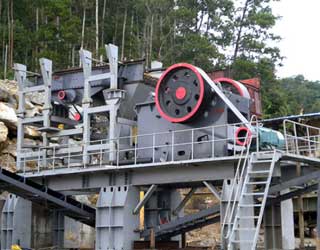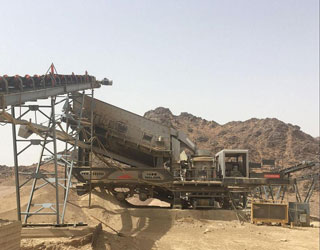
What is the density of crusher run – WikiAnswers. 2082 kg /m³ to 2243 kg /m³. What is crusher run called in German? "Schotter", " Kies" and " Kiesel" are the German words for " crusher run " The gravel …. Best placed in 2 to 3 inch layers wetted and vibratory compacted until disired thickness is …. » More detailed.
 WhatsAppGet PriceGet A Quote
WhatsAppGet PriceGet A Quote
Weight of a cubic yard of crusher run gravel Products. As a leading global manufacturer of crushing, grinding and mining equipments, we offer advanced, reasonable solutions for any size-reduction requirements including, Weight of a cubic yard of crusher run gravel, quarry, aggregate, and different kinds of minerals.
 WhatsAppGet PriceGet A Quote
WhatsAppGet PriceGet A Quote
The sand cone is placed on the test hole with the help of the base plate and sand is allowed to run by opening the control value. When the sand stops running, the valve is closed and the cone is weighted with the remaining sand. Then the dry density of soil can be calculated and the present of compaction of otherwise the compaction is failure.
 WhatsAppGet PriceGet A Quote
WhatsAppGet PriceGet A Quote
Assume you are using dry gravel with a swell percentage of 15% and a shrink percentage of -7%. Plug those values into the calculator and it will tell you that the compaction factor = 1.237. Multiply the 1185 cubic yards by 1.237. 1185 * 1.237 = 1465.9. To complete this job you will need 1465.9 cubic yards of this gravel in loose state volume.
 WhatsAppGet PriceGet A Quote
WhatsAppGet PriceGet A Quote
Ron is right in that a lot depends on the material. For a well graded crushed sand and gravel (road base) I''ve seen as much as 400 kPa used (assuming that there is no underlying softer material within the zone of influence). We''ve compacted residual clayey silt to silty clay at 95% standard Proctor and obtained an effective friction angle of 32deg.
 WhatsAppGet PriceGet A Quote
WhatsAppGet PriceGet A Quote
increase in density is noted, after which all subsequent sections built of the same ma terial are required to be compacted to at least 98 percent of the density attained in the test strip (3). A thorough discussion of some of the variety of laboratory methods of determining maximum density and optimum moisture may be found in a paper by Hveem
 WhatsAppGet PriceGet A Quote
WhatsAppGet PriceGet A Quote
Bulk Density of Sand. The approximate bulk density of sand that is commonly used in normal-weight concrete is between 1520-1680 kg/m 3 (95-105 lb/ft 3) Cement Bulk Density. However, Cement being a binder in concrete, knowing its density will be very useful to change the characteristics of concrete.
 WhatsAppGet PriceGet A Quote
WhatsAppGet PriceGet A Quote
the ASTM Method D 2049 (Relative Density), the Washington Spring-Loaded Vibratory Compactor Method, the Marshall Hammer Test, and the Gyratory Compactor Procedure. The aggregates tested were a granite-gneiss, a crushed gravel, a dolomitic limestone, and a basalt. A prototype field compaction ''testing program was conducted using the same
 WhatsAppGet PriceGet A Quote
WhatsAppGet PriceGet A Quote
It may often look like sand, though it is actually part of the process of crushing limestone, granite or whatever is local to your market for coarse aggregates. Crusher run weighs approximately 2,500 lbs. per cubic yard. The depth of the crusher run base recommended in inches will vary depending on the project. What is Crusher Run used for?
 WhatsAppGet PriceGet A Quote
WhatsAppGet PriceGet A Quote
Density Of Compacted Sand Crusher Run. Prompt : Caesar is a famous mining equipment manufacturer well-known both at home and abroad, major in producing stone crushing equipment, mineral separation equipment, limestone grinding equipment, etc. Field Density Compaction Tests shall be in accordance with ASTM D1556, ASTM.
 WhatsAppGet PriceGet A Quote
WhatsAppGet PriceGet A Quote
increase in density is noted, after which all subsequent sections built of the same ma terial are required to be compacted to at least 98 percent of the density attained in the test strip (3). A thorough discussion of some of the variety of laboratory methods of determining maximum density and optimum moisture may be found in a paper by Hveem
 WhatsAppGet PriceGet A Quote
WhatsAppGet PriceGet A Quote
density Of gold grinding aid samac abet.cl. dry density of crusher sand. density Of compacted sand crusher run. density of crushed stone. typical gravel density dry is between 1520 and 1680 kg to 105 lbsf. if it is mixed with sand the density is around 1920 kg or 120 lbsf common gravel and crushed stone sizes. contrary to what you may think
 WhatsAppGet PriceGet A Quote
WhatsAppGet PriceGet A Quote
density of limestone crusher run 2 inch (50mm) Crusher Run LiSKDne Simcoe Soils 2" (50mm) Crusher Run LiSKDne has excellent compaction, high stability in soft. Density Of Crushed Rock 20mm 50mm cz-eu 50mm Crusher Run Limestone 50mm Crusher Run Limestone is classified as Granular B Type II (OPSS), crushed rock from a quarry.
 WhatsAppGet PriceGet A Quote
WhatsAppGet PriceGet A Quote
Crusher run is a blended mix of coarse aggregate and fine aggregate. The combination of both crushed stone and stone dust creates a low void content (the amount of space or air between the pieces of rock in a mix) that is valuable in concrete construction for its compaction ability and drainage characteristics.
 WhatsAppGet PriceGet A Quote
WhatsAppGet PriceGet A Quote
Crusher run density kg m in malaysiarusher run specifiion in malaysiarusher run density kg m3 in malaysiawhat is the density of crusher run in metric 2082 kgm to 2243 kgm what is crush ensity of compacted sand crusher runosted at can i use quary powder instead of river sand crusher run density kg m density for crusher run.
 WhatsAppGet PriceGet A Quote
WhatsAppGet PriceGet A Quote
compaction takes place to develop the compaction specifications. Modified Proctor values are higher because they take into account higher densities needed for certain types of construction projects. Test methods are similar for both tests. [See Figure 10] Field tests It is important to know and control the soil density during compaction.
 WhatsAppGet PriceGet A Quote
WhatsAppGet PriceGet A Quote
2082 kg/m³ to 2243 kg/m³. Density is mass divided by volume. In SI (metric) units, if mass is in kilograms, and volume in cubic meters, then the density will be kilograms / cubic meters.Density
 WhatsAppGet PriceGet A Quote
WhatsAppGet PriceGet A Quote
2.8, and the Unified Classification for the crusher run aggregate ranges between a GW-GM and a SW-SM. This material is referred to as gravel or crusher run gravel in this report. 5.3.2 Standard Density Relationships New Castle sand. Moisture-density relationships were determined for the New Castle sand using the modified Proctor procedure (ASTM
 WhatsAppGet PriceGet A Quote
WhatsAppGet PriceGet A Quote
Jaw crusher has two models: PE jaw crusher and JCE European jaw crusher, I think the JCE European jaw crusher is the new model crusher. Can you use crusher run instead of sand? Depends on your
 WhatsAppGet PriceGet A Quote
WhatsAppGet PriceGet A Quote
Calculate Crusher Run. Type in inches and feet of your project and calculate the estimated amount of Base material in cubic yards, cubic feet and Tons, that your need for your project. The Density of Crusher Run : 2,410 lb/yd³ or 1.21 t/yd³ or 0.8 yd³/t. A:
 WhatsAppGet PriceGet A Quote
WhatsAppGet PriceGet A Quote
exceed 0,2% for all materials density shall not exceed 1,0%. except calcrete for which the exceed 0,5%. swell shall not exceed 0,5%. COMPACTION 98% or 100% (as specified) of The density requirements of the layer in which the REQUIREMENTS modified AASHTO density for material is used, shall be applicable.(See subclause natural materials. 3402(b).)
 WhatsAppGet PriceGet A Quote
WhatsAppGet PriceGet A Quote
Construction Aggregate Calculator. Enter the width, length, thickness, and product density and hit the “Calculate” button to calculate your estimate. If you do not know the product density, use the optional density estimator* or contact a local sales representative.
 WhatsAppGet PriceGet A Quote
WhatsAppGet PriceGet A Quote
increase in density is noted, after which all subsequent sections built of the same ma terial are required to be compacted to at least 98 percent of the density attained in the test strip (3). A thorough discussion of some of the variety of laboratory methods of determining maximum density and optimum moisture may be found in a paper by Hveem
 WhatsAppGet PriceGet A Quote
WhatsAppGet PriceGet A Quote
compaction takes place to develop the compaction specifications. Modified Proctor values are higher because they take into account higher densities needed for certain types of construction projects. Test methods are similar for both tests. [See Figure 10] Field tests It is important to know and control the soil density during compaction.
 WhatsAppGet PriceGet A Quote
WhatsAppGet PriceGet A Quote
BULK MATERIAL DENSITY TABLE. Material Description Loose Bulk Density #/Ft. Cork, Fine Ground 12-15 Cork, Granulated 12-15 Corn, Cracked 45-50 Corn Cobs, -Ground 17 Corn Cobs, Whole 12-15 Corn, Ear 56 Corn, Germs 21 Corn, Grits 40-45 Corn Oil Cake 25 Corn, Seed 45 Corn, Shelled 45 Corn, Sugar 30-35 Cornmeal 38-40 Cottonseed Cake, Crushed 40-45
 WhatsAppGet PriceGet A Quote
WhatsAppGet PriceGet A Quote
compaction takes place to develop the compaction specifications. Modified Proctor values are higher because they take into account higher densities needed for certain types of construction projects. Test methods are similar for both tests. [See Figure 10] Field tests It is important to know and control the soil density during compaction.
 WhatsAppGet PriceGet A Quote
WhatsAppGet PriceGet A Quote
Class 2 Crushed Rock Class 3 Crushed Rock Application Road base materials Road base/sub base material, hard stand areas, under concrete slabs, bedding material and backfilling Available Dry, wet mix or stabilised Dry, wet mix or stabilised Loose Density (natural) (approx) 1.65 t/m3 1.65 t/m3 Maximum Dry Density (approx) 2.24 t/m3 2.24 t/m3
 WhatsAppGet PriceGet A Quote
WhatsAppGet PriceGet A Quote
BULK MATERIAL DENSITY TABLE. Material Description Loose Bulk Density #/Ft. Cork, Fine Ground 12-15 Cork, Granulated 12-15 Corn, Cracked 45-50 Corn Cobs, -Ground 17 Corn Cobs, Whole 12-15 Corn, Ear 56 Corn, Germs 21 Corn, Grits 40-45 Corn Oil Cake 25 Corn, Seed 45 Corn, Shelled 45 Corn, Sugar 30-35 Cornmeal 38-40 Cottonseed Cake, Crushed 40-45
 WhatsAppGet PriceGet A Quote
WhatsAppGet PriceGet A Quote
Assume you are using dry gravel with a swell percentage of 15% and a shrink percentage of -7%. Plug those values into the calculator and it will tell you that the compaction factor = 1.237. Multiply the 1185 cubic yards by 1.237. 1185 * 1.237 = 1465.9. To complete this job you will need 1465.9 cubic yards of this gravel in loose state volume.
 WhatsAppGet PriceGet A Quote
WhatsAppGet PriceGet A Quote
Crusher Run. UUID. c398b4d9-8e33-11ea-96ae-bc764e203090. The Mean Density of Crusher Run approximately 2,200 kg/m. This equation, Density of Crusher Run, references 0 pages. Show. Datasets. Equations and Constants.
 WhatsAppGet PriceGet A Quote
WhatsAppGet PriceGet A Quote